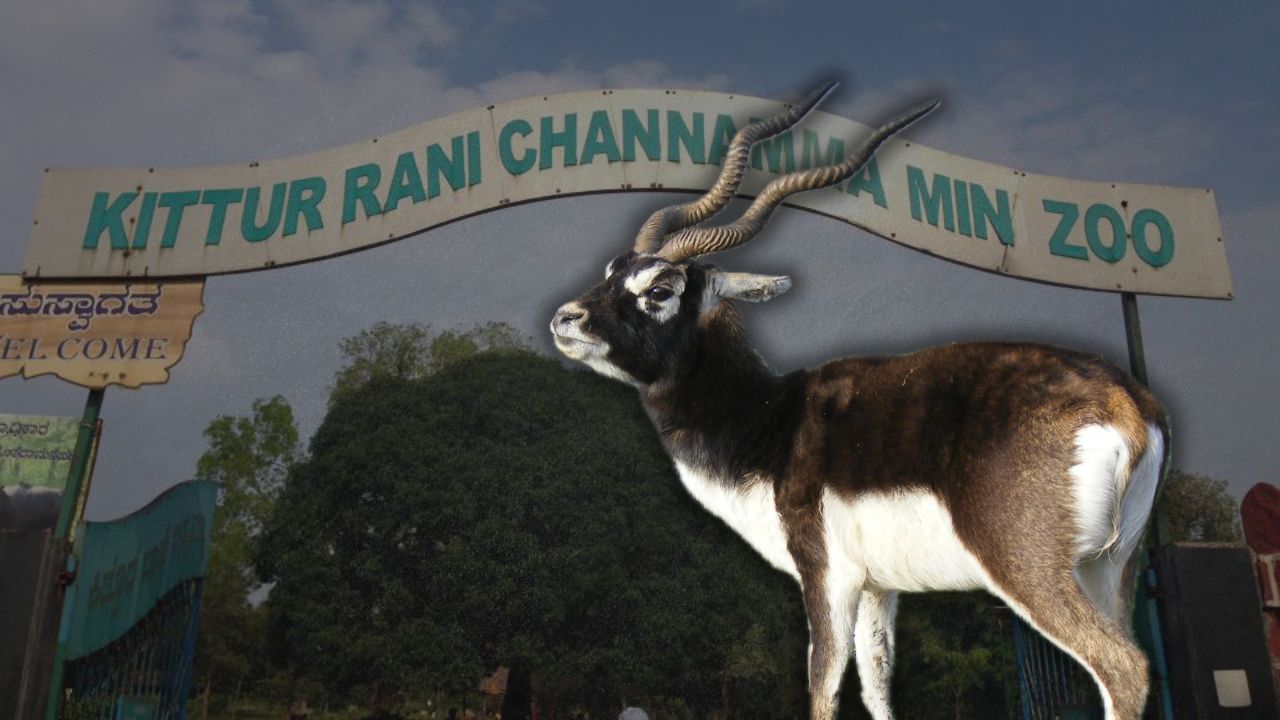When the first eight blackbuck deaths were reported on Thursday, viscera samples were sent to the Wild Animal Diseases Diagnostic Lab at Bannerghatta. Despite this, 20 more blackbucks died on Saturday, followed by another death on Sunday.
Published Nov 17, 2025 | 6:00 AM ⚊ Updated Nov 17, 2025 | 10:38 AM

The blackbuck is an endangered species in India and is protected under the Wildlife Protection Act.
Synopsis: Twenty-nine blackbucks have died within four days at the Kittur Rani Chennamma Zoo in Belagavi, Karnataka, raising concerns over possible mismanagement and negligence. Zoo officials suspect a bacterial infection and have sent viscera samples for analysis, while wildlife activists allege that standard procedures were not followed, leading to further deaths. The state government has ordered an expert inquiry, as the incident comes amid similar concerns raised by recent animal deaths at other zoos.
In the past four days, 29 of the 38 blackbucks housed at Kittur Rani Chennamma Zoo in Karnataka’s Belagavi have died under mysterious circumstances, raising concerns over mismanagement and negligence.
The blackbuck is an endangered species in India and is protected under the Wildlife Protection Act. Although the cause of death is yet to be confirmed, Assistant Conservator of Forests Nagaraj Balehosur told reporters that the veterinary doctor at the zoo suspected a bacterial infection.
“We have sent the viscera sample to the authorities at Bannerghatta Zoological Park in Bengaluru to find out the reason behind the death,” he said.
Forest and environment minister Eshwar Khandre has ordered a probe into the incident.
The 38 blackbucks, aged between four and six years, were brought from Binkadakatti Zoo in Gadag around four to five years ago.
When the first eight blackbuck deaths were reported on Thursday, viscera samples were sent to the Wild Animal Diseases Diagnostic Lab at Bannerghatta.
Officials said the remaining animals were placed under observation and treated as per advice from experts in Bannerghatta and Mysuru. Despite this, 20 more blackbucks died on Saturday, followed by another death on Sunday.
Joseph Hoover, wildlife activist and former member of the State Wildlife Board, told South First that zoo officials may not have followed standard protocols.
“Had SOP [Standard Operating Procedures] been followed during postmortem, the clinical reason for the sudden death of first batch of blackbuck could have been established,” Hoover said.
He further claimed that the deaths were not taken seriously, leading to the virus spreading among other blackbucks.
Meanwhile, expressing concern over the deaths, minister Khandre said that a committee of experts would investigate whether the blackbucks had died due to contaminated water or food or any infection that spread from domestic animals.
“Death of animals at the zoo is a matter of concern and the staff have to ensure that such incidents do not recur. If negligence of staff comes to the fore, action would be taken against them as per the law,” he said in a statement.
A similar incident of mismanagement was reported at Kerala’s Puthur Zoological Park on 12 November, where several spotted deer died after an attack by stray dogs.
The post-mortem examination revealed capture myopathy, a stress-induced metabolic disorder that can be fatal in wild animals subjected to extreme fear or physical exertion, as the cause of death.
Chief Forest Veterinary Officer Dr Arun Zakaria explained that the incident occurred after a pack of stray dogs entered the zoo premises, triggering panic among the deer.
“The animals tried to flee in fear and sustained fatal injuries after hitting the enclosure walls. The immediate cause of death was capture myopathy,” he told the media.
He added that the dogs might have entered the zoo after being attracted by rubbish discarded by staff or other food waste.
“Possible entry points for the stray dogs have been identified. Measures should be taken to plug these gaps immediately. While zoo animals cannot escape from their enclosures, it is equally critical to ensure that no outside animals enter the premises,” he added.
Additionally, a divisional forest officer noted that both capture myopathy and infections can occur when animals are moved to unsuitable environments. This can happen if the animals were newly translocated from elsewhere.
Puthur Zoo alone has recorded at least 26 animal deaths since transfers began from the Thrissur Zoo last year.
(Edited by Dese Gowda)
